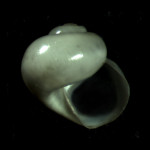To say sampling an environment covered by 1000’s of meters of water is difficult would be an understandment. Sampling requires creativity, technology, and luck (mostly the latter). Equipment must be designed to withstand both pressure and saltwater. Both design, deployment, and maintenance requires considerable funding. Being a deep-sea scientist is perhaps a bit masochistic. So what equipment do we use?
- Research Vessels-To access the deep sea you have to set sail. The ship needs to be both large and stable enough to access high seas. In addition, deploying equipment also requires A frames, cranes, and lots of cable which all further require a large ship. No Zodiacs here!
- Submersible-‘Manned’ pardoned me ‘Personed’ Submarines, More at Previous Post
- ROV (Remote Operated Vehicle)-A tethered robot with manipulator arms, collection devices, and cameras useful for video transects, fine sampling, and deployment of tool packages.
- Corer-There are mutiple types but essentialy they all include punching a tube in the sediment. The length of the tube can vary depending on whether you sampling organisms on/near the sediment surface or trying gain a deep core for geological data. Depending on the diameter/length of the core tubes they can be deployed singuraly or in mutiples. More at the Census of Marine Life
- Box Corer-A specialized corer that is square shaped. Takes typically a 0.25m to 0.5m square. The boxcorer can also be subdivided into smaller subcore squares and affectionately called the ‘vegimatic’
- Trawls-A net towed over large distances through the watercolumn or over the bottom. Several different types exist including the beam, otter, and Menzies. More at the Census of Marine Life.
- Sledge-A towed steal frame with mesh dragged over the bottom. More at the Census of Marine Life.
- Landers-Any number of tool packs that are placed on the seafloor to collect biotic and abiotic data.
- Traps-Exactly what is sounds like. Can either be activated to release of weights to be retrieved at the surface or can be submersible/rov collected.
- Cameras-A camera and battery pack placed on the bottom that acquires time lapse photography.
I always forget how difficult and expensive this line of work is until I have to describe it to someone else. If you want to to fund my research please feel free to drop me a line.
Share the post "ARCHIVE: 25 Things You Should Know About The Deep Sea: #10 Sampling The Deep Sea is Difficult and Requires a Variety of Equipment"






“Being a deep-sea scientist is perhaps a bit masochistic.”
Any discipline that allows you to go on “cruises” as part of your research can hardly be described as masochistic. It may seem hard while you’re doing it, but from the outside it looks like vacation (often times in the tropics).
There is a great passage in The Restless Sea by Robert Kunzig* in which he compares the way we study the oceans to what aliens might learn about the earth by dragging a grappling hook along a few hundred meters of ground and trying to make sense of what they pull up. If I remember correctly, in Kunzig�s example they pulled up a car with two people in it, a cloths line, a tree and a dog house.
*I am pretty sure this is the right book, but I don�t have my copy nearby to confirm.
“If you want to to fund my research please feel free to drop me a line.”
Much easier than a grant application…
Important to cover all your bases.